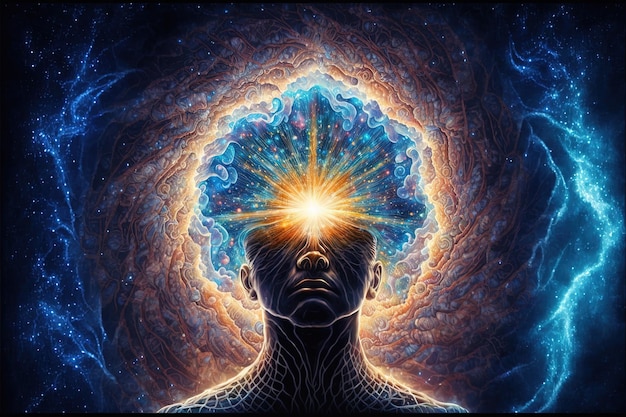Unlocking the Hidden Dimensions of Consciousness: The Baffling New Theory That Could Redefine Reality

A radical new theory is shaking the foundations of how we understand human consciousness. This audacious idea, proposed by Michael Pravica, a physicist at the University of Nevada, Las Vegas, suggests that consciousness may not be a byproduct of brain activity alone but could instead arise from interactions with hidden dimensions in the universe. His theory, built on the concept of hyperdimensionality, could rewrite our understanding of reality itself.

For centuries, scientists have wrestled with the origins of consciousness. Is it simply the result of neural networks firing in the brain? Or does it involve something far more mysterious and profound? While leading theories link consciousness to brain activity—such as the integration of information across neural networks or top-down signaling within brain regions—Pravica’s proposition ventures beyond neuroscience and into the uncharted territories of theoretical physics.
At the heart of Pravica’s theory is hyperdimensionality, the notion that the universe is composed of more than the four dimensions we typically experience: height, width, depth, and time. These hidden dimensions, he argues, could hold the key to understanding the enigma of consciousness. According to Pravica, our minds may “plug into” these invisible planes when we engage in artistic creation, scientific discovery, philosophical reflection, or even dreaming.
“The sheer fact that we can conceive of higher dimensions within our minds and our mathematics is a gift. It’s something that transcends biology,” Pravica stated in an interview with Popular Mechanics. His theory suggests that moments of heightened awareness—such as when we dream or experience deep intellectual insights—may represent a temporary connection to these hidden dimensions. In these moments, consciousness is no longer confined to our physical world but instead traverses into higher planes of reality, allowing for extraordinary bursts of creativity and insight.

To grasp this concept, consider a two-dimensional being living in a two-dimensional world—like a character in a comic strip. If a three-dimensional object, such as a sphere, were to pass through their plane of existence, it would first appear as a dot, then grow into a circle, and finally shrink again into a dot before disappearing. The 2D being would have no way of perceiving the full complexity of the 3D object. Similarly, Pravica argues, we are limited by our four-dimensional experience, unable to fully perceive the hidden dimensions of the universe that may be crucial to our consciousness.
Pravica’s theory draws parallels with string theory, another concept rooted in hyperdimensionality. String theory posits that all matter and energy in the universe are composed of minuscule, vibrating strings that operate on a subatomic scale. These strings not only interact within the four dimensions we observe but also produce effects in hidden dimensions, giving rise to the particles and forces we experience in our everyday lives.
“String theory is essentially a theory of hyperdimensionality,” Pravica explained. “It’s looking at how the universe is put together on a sub-quantum scale.” He suggests that just as these hidden dimensions play a role in the fundamental makeup of the universe, they may also influence the workings of human consciousness.
However, Pravica’s theory is not without controversy. Critics argue that the cornerstone of his ideas veers into the realm of science fiction. “The notion that consciousness could be tied to hidden dimensions is provocative but highly speculative,” says one leading scientist in the field. “It opens fascinating philosophical questions, but we are still far from proving anything scientifically.”
Despite the skepticism, Pravica’s ideas are part of a growing movement within theoretical physics that seeks to explore the unknown and push the boundaries of human understanding. Could consciousness truly transcend biology and connect with the hidden architecture of the universe? Could it be that the mysterious phenomenon that has evaded scientific explanation for centuries is more than just brain activity—it is the result of an interaction with unseen dimensions that shape not only our minds but the fabric of reality itself?
If Pravica’s theory holds any truth, it could mark the dawn of a new era in understanding consciousness, one that takes us beyond the limits of the physical brain and into the mysterious, hidden planes of existence that lie just beyond our reach.




